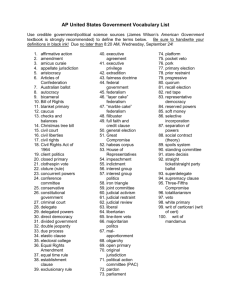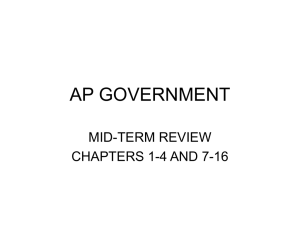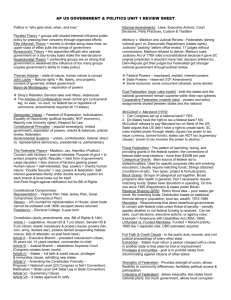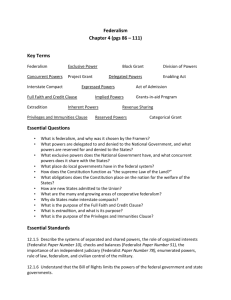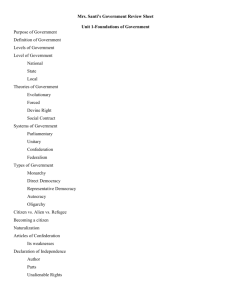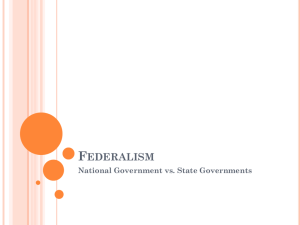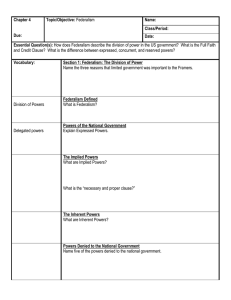Chapter 5 Section 1 and 2 Review Questions
advertisement
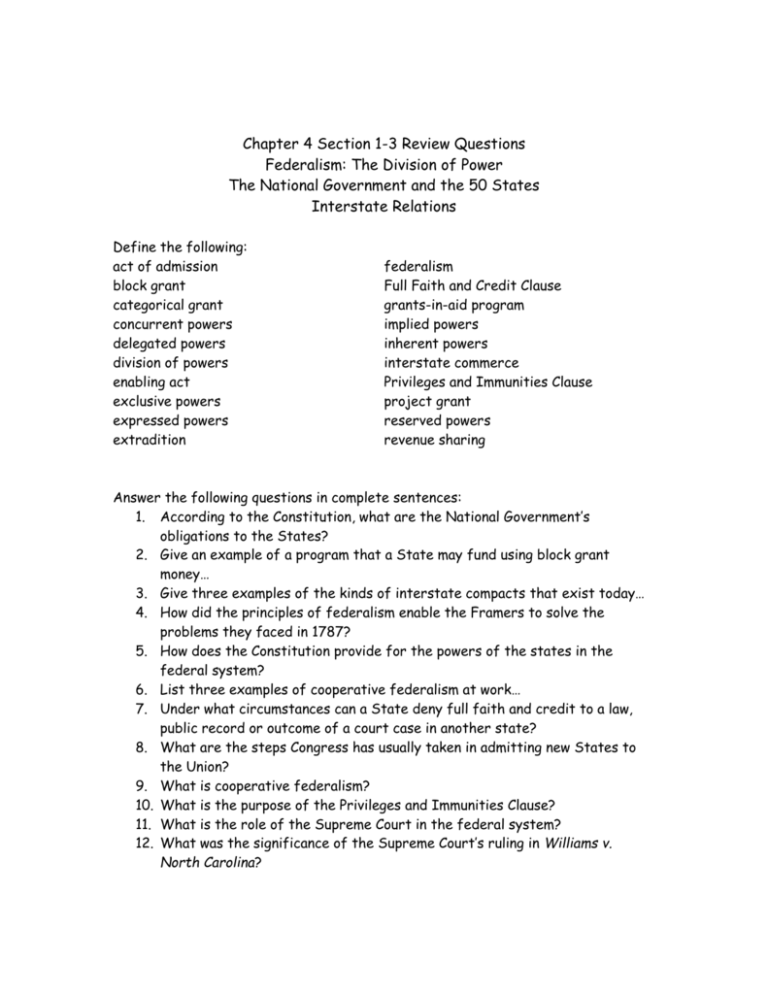
Chapter 4 Section 1-3 Review Questions Federalism: The Division of Power The National Government and the 50 States Interstate Relations Define the following: act of admission block grant categorical grant concurrent powers delegated powers division of powers enabling act exclusive powers expressed powers extradition federalism Full Faith and Credit Clause grants-in-aid program implied powers inherent powers interstate commerce Privileges and Immunities Clause project grant reserved powers revenue sharing Answer the following questions in complete sentences: 1. According to the Constitution, what are the National Government’s obligations to the States? 2. Give an example of a program that a State may fund using block grant money… 3. Give three examples of the kinds of interstate compacts that exist today… 4. How did the principles of federalism enable the Framers to solve the problems they faced in 1787? 5. How does the Constitution provide for the powers of the states in the federal system? 6. List three examples of cooperative federalism at work… 7. Under what circumstances can a State deny full faith and credit to a law, public record or outcome of a court case in another state? 8. What are the steps Congress has usually taken in admitting new States to the Union? 9. What is cooperative federalism? 10. What is the purpose of the Privileges and Immunities Clause? 11. What is the role of the Supreme Court in the federal system? 12. What was the significance of the Supreme Court’s ruling in Williams v. North Carolina?




